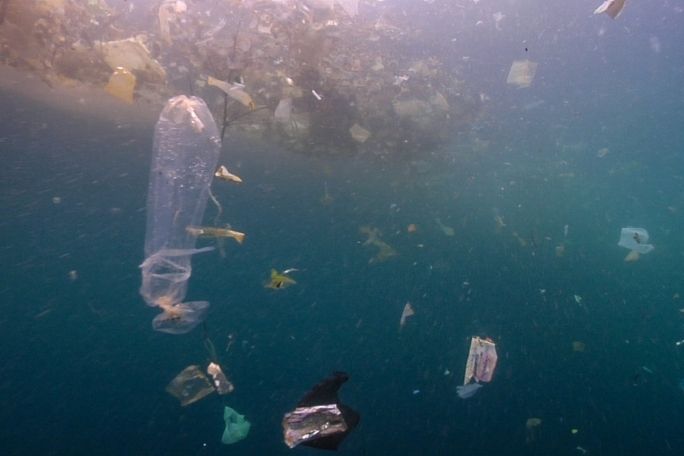Lesson summary
This lesson incorporates clips from Blue The Film as learning inspiration. Students perform an analysis of and design solutions to combat one of our major environmental issues; litter. Students use a study of a local site at school to calculate the amount of litter at a larger scale. Proportional thinking is embedded in a meaningful problem that students themselves can address.
Learning intentions:
Students will...
- use a sample area to estimate andunderstand the amount of litter in larger areas.
Success criteria:
Students can...
- be able to calculate means, solve a problem involving direct proportion, and convert between units of area
- know that litter is a huge problem, both on land and in the ocean.
Lesson guides and printables
Lesson details
Curriculum mapping
Australian curriculum content descriptions:
Year 9 Mathematics:
- Solve problems involving direct proportion. Explore the relationship between graphs and equations corresponding to simple rate problems (ACMNA208).
Syllabus outcomes: MA5.2-1WM, MA5.2-2WM, MA5.2-5NA
General capabilities: Critical and Creative Thinking, Ethical understanding
Cross-curriculum priority: Sustainability OI.6, OI.7
Relevant parts of Year 9 achievement standards: Students calculate relative frequencies to estimate probabilities.
Unit of work: Blue The Film – Mathematics – Year 7 – 10
Time required: 110 min +
Level of teacher scaffolding: Medium – oversee activities and lead students in discussion.
Resources required
- Student Worksheet – one copy per student
- Device capable of presenting a clip to the class
- Tape measures or metre rulers – one per group of 2-3 students, chalk or tape – one per group of 2-3 students, calculators – one per student (optional)
Skills
This lesson is designed to build students’ competencies in the following skills:
- Communication
- Critical thinking
- Initiative
- Global citizenship
Additional info
Blue is a feature documentary film charting the drastic decline in the health of our oceans. With more than half of all marine life lost and the expansion of the industrialization of the seas, the film sets out the challenges we are facing and the opportunities for positive change. Blue changes the way we think about our liquid world and inspires the audience to action. Find out how to screen or download the film here. Along with the film is an ambitious global campaign to create advocacy and behaviour change through the #oceanguardian movement. To become an ocean guardian, see the website.


Welcome back!
Don't have an account yet?
Log in with:
By signing up to Cool.org you consent and agree to Cool's privacy policy to
store, manage and process your personal information. To read more, please see
our privacy policy here(Opens in new tab).
Create your free Cool.org account.
Many of our resources are free, with an option to upgrade to Cool+ for premium content.
Already have an account?
Sign up with:
By signing up to Cool.org you consent and agree to Cool's privacy policy to
store, manage and process your personal information. To read more, please see
our privacy policy here(Opens in new tab).